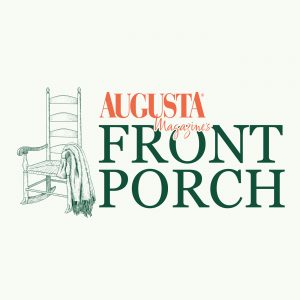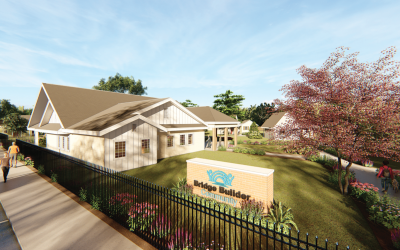In an era where downtown hosts the Georgia Cyber Center, it may be hard to imagine an Augusta stained by the brutality of a bush war and riven by civil strife. However, like most cities of any significance in the United States, Augusta was once a frontier town on the front lines of a war, replete with all the lawlessness and violence characteristic of such locations. In fact, much of downtown’s geography and nomenclature is directly descended from these violent formative days. Augusta’s experience during the American Revolutionary War is a reminder that, like the rest of America, she came of age amidst fire and blood.
Founded in 1736 as the inland lynchpin of James Oglethorpe’s Georgian experiment, Augusta was located not far from the recognized border with the Creek Nation at the Little River in modern-day Lincoln county, now an arm of Clark’s Hill lake (itself named after war hero Elijah Clarke, who plays a major role in this story). Positioned along a major Indian trading path (modern-day Broad Street), Augusta was the gateway to Georgia’s backcountry. By the early 1770s, Augusta boasted around 100 buildings clustered along the river, primarily in modern-day Olde Town between 4th and 6th streets.1
The American Revolutionary War of the ensuing decade was a colorful and cosmopolitan conflict, combining elements of national liberation, Indian war, and civil strife. Assuming a vicious personal dimension in Georgia, the struggle exemplified both the vindictive nastiness of a backcountry bush war and the fratricidal polarization of a true civil war.
On August 1st 1775, as the colonies were beginning to slip from the royal grip, the Augusta chapter of the Liberty Boys paid a neighborly visit to one outspoken loyalist, Thomas Brown. They dragged Brown from his home, tarred and feathered him, partially scalped him, and then applied burning branches to the soles of his feet, causing him to lose two toes.2 Brown then escaped under cover of night, fleeing to the decidedly loyalist colony of East Florida and vowing vengeance upon his attackers. The Whigs (patriots) of Augusta had created their own worst enemy. Thomas Brown would return in due time, bringing the fiery wrath of the Crown to the backcountry, and Georgian patriots would come to rue their treatment of him many times over.
Georgia suffered from a severe case of divided loyalties and there were many residents, who, like Brown, had no desire to see the King’s rule upended. Georgia’s revolutionary leadership soon set about establishing a state government and promulgated the state’s first constitution in February 1777. St. Paul’s Parish became Richmond County, named after a staunch supporter of the American cause in the British parliament. An inquisitorial apparatus was established to investigate the loyalties of Georgia’s citizens. Those who failed to defend themselves from charges of loyalism were exiled from the state, forbidden to return upon pain of death.3 Long, sad trains of loyalists were seen headed south to the safety of St. Augustine. Thomas Brown recruited many of these refugees to join his East Florida Rangers, which terrorized the Georgian countryside in reprisal raids across the St. Mary’s River.
British regulars arrived in Savannah shortly after Christmas of 1778, prepared to “rend a Stripe and a Star from the Flag of Congress.”4 A detachment under the command of Lieutenant Colonel Archibald Campbell and accompanied by none other than now-Lieutenant Colonel Brown and his East Florida Rangers, occupied Augusta on January 31st, 1779. On February 14th, Colonels Andrew Pickens and Elijah Clarke, of the South Carolina and Georgia militia respectively, routed a large force of loyalists at the Battle of Kettle Creek in Wilkes County. This battle marked the unfortunate entrance into Georgia of the trend of executing enemy prisoners, which would be adopted by all sides with gusto. With the defeat of this loyalist force, Campbell and Brown fell back upon Savannah on Feb. 28th, defeating patriot militia at Brier Creek en route and likewise offering little quarter.5
An uneasy stalemate ensued where the rebels controlled the backcountry from Augusta, and the royalist government ruled Savannah and its environs. Armed bands claiming allegiance to either side or none proliferated in this power vacuum, and plunder, robbery, and murder became the norm.
Brown and his loyalist unit, now rebranded as the King’s Carolina Rangers, retook Augusta on June 8th 1780. Brown took the surrender and parole of various local militias, and a Disqualifying Act was instituted to bar the most prominent former rebels from holding public office or bearing arms. Brown gained the enmity of the backcountry by evicting squatters from Creek territory, infringing upon that God-given right of settlers to illegally encroach on Indian lands.6
Elijah Clarke kept the flame of rebellion alive, keeping his militia in the field along with the remnants of the Georgia Government in Wilkes County. Brown failed to grapple with and destroy this nucleus of resistance, and on September 14th 1780 Clarke struck Augusta in a surprise attack, sending an outlying camp of Indians reeling back towards downtown. While Brown sallied forth to aid his allies in intense fighting along modern-day Battle Row, an undetected column of Clarke’s troops entered Augusta proper and seized the fortifications at Fort Grierson. Surrounded, Brown’s troops and his Creek and Cherokee allies dug in at Mackay’s House, an Indian trading post now located beneath Sibley Mill. Clarke’s forces laid siege, and Brown’s troops were soon reduced to a diet of urine and raw pumpkins, while the wounded cried out in misery for want of doctors and water. After several days of terrible suffering, British reinforcements from the post at Ninety-Six crossed the river on September 18th, relieving the wounded Brown.7
Now outnumbered, Clarke’s troops beat a hasty retreat from their trenches around the McKay House. The Indians set upon the retreating militia, killing and scalping some and burning others alive. Loyalist revenge, as well, was swift and terrible. 13 prisoners were hanged from the staircase of the McKay house for violations of parole. British columns chased the patriots into the backcountry, forcing Clarke to flee into South Carolina. Wilkes county was viciously and thoroughly scoured. Over 100 Whig homes were torched and the families of Clarke’s men were given a choice of submission or exile.8 Recognizing the need for enhanced defenses, Brown requisitioned St Paul’s Church and established Fort Cornwallis there. With the departure of Clarke’s militia, the Crown reigned supreme in Georgia.
As the war inched toward peace negotiations, there was talk of leaving Georgia to the British in return for the independence of the remaining 12 colonies. Recognizing the need to establish a presence in Georgia to counterbalance the British claim to the state, Clarke’s militia reentered Wilkes County in April of 1781. Joined by Andrew Pickens’ militia and Major General Henry “Light-Horse Harry” Lee’s continentals, they arrived outside Augusta on May 21st 1781.9
The combined revolutionary force found Brown’s forces divided between Forts Grierson and Cornwallis, separated by Campbell’s Gully. Seizing this opportunity to divide and conquer, the rebels quickly overwhelmed Fort Grierson. Turning to Fort Cornwallis, the Americans began construction of a Maham Tower, an elevated platform allowing an artillery piece to fire downward into the enemy fortification. As the tower approach completion, Brown tried everything in the playbook to ward off the inevitable, authorizing nighttime sallies, torching houses near the fort, and even sending a saboteur disguised as a deserter to destroy the tower. These were little more than exercises in futility, and the tower was completed on June 1st, wreaking havoc within the fort. Lee requested and received Brown’s surrender on June 5th. Given the attitude of many within Pickens and Clarke’s militias toward Brown and his loyalists, Lee oversaw extraordinary precautions to prevent the murder of prisoners. Despite these precautions, Colonel Grierson and several others were killed in cold blood after the surrender.10 With the fall of Augusta, the entire countryside soon fell into rebel hands and the British were bottled up in Savannah.
The cliché that history is written by the victors is tired yet nonetheless almost invariably true. Telfair Street, Greene Street, Walton Way, and Twiggs Streets among many others bear witness to political and military figures of the patriot cause during this time of turmoil. Thomas Brown and his compatriots, on the other hand, have been quietly written out of our geographic lexicon. When British troops finally evacuated Savannah in 1782, thousands of loyalists including Brown went into exile, never to return. You’ll find no streets named after Brown, Grierson, or any other loyalist in our downtown.
The United States came of age amidst near-constant frontier warfare against Indian tribes, European powers such as the French, Spanish and British, and other Americans. Augusta is no exception to this rule. Downtown can directly trace its lineage to these violent years during our war of independence.
—1Cashin, Edward. The Story of Augusta. (Augusta: Richmond County Board of Education, 1980), 22.
2Rauch, Steven. “An Ill-timed and Premature Insurrection.” Southern Campaigns of the American Revolution 2, No. 9 (2005), 1.
3Cashin, Edward and Robertson, Heard. Augusta and the American Revolution: Events in the Georgia Back Country 1773-1783. (Darien: Ashantilly Press, 1975), 19.
4Ibid., 23.
5Ibid., 28-29.
6Ibid., 43.
7Rauch, Steven. “An Ill-timed and Premature Insurrection.”, 6-12.
8Ibid., 13.
9Cashin, Edward and Robertson, Heard. Augusta and the American Revolution, 51-52.
10Ibid., 58-59.
Appears in the January 2020 issue of Augusta Magazine.






